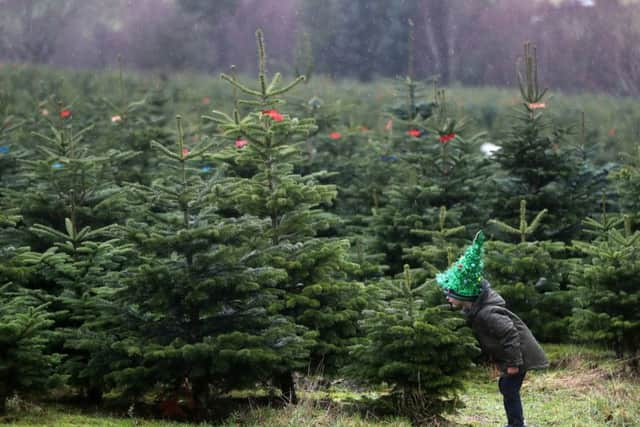Snug homes are real reason for '˜non-drop' Christmas tree's soaring popularity
This is earlier than half a century ago and not just because, accompanied by the voices of Noddy Holder and Aled Jones in shops and supermarkets, the festive season now stretches over a longer period. The reason trees twinkle their fairy lights in windows from mid-December is that most of us live in well-heated houses.
From the earliest days of the Christmas tree the predominant variety was the Norway spruce, and its strong aroma of pine resin was as much a part of Christmas Day as the smell of roasting turkey. Many acres of the Dales and Pennines were covered by plantations of the Norway. However, in the 1970s it was found to have one very serious defect. It hates snug homes which are centrally heated and double glazed. As the sap begins to dry out, the Norway starts dropping its needles after a week.
Advertisement
Hide AdAdvertisement
Hide AdAnd so tree growers switched to the Nordmann fir, which has a higher natural sap content and so retains its needles for much longer. Long enough, in fact, to remain largely unaffected by central heating from the first half of December until trees are traditionally taken down on Twelfth Night.


Yorkshire Christmas Trees is one of the biggest growers and sellers, with thousands of trees passing through its large yard outside Denholme on the west side of Bradford. It supplies garden centres and supermarkets from John O’ Groats to Land’s End, and the company’s Oliver Kenny tells me that the so-called “non-drop” Nordmann now commands about 80 per cent of the UK market.
The remainder are Norway spruce for those who like that heady, nostalgic smell of resin and don’t mind needles piling up on the carpet. To a lesser extent people are choosing a relatively new arrival, the Frazer fir, which is the best-selling tree in the US.
The popularity of artificial trees seems to have peaked, however. The backlash against plastics has led many to be repelled by the thought of having a Christmas centrepiece made from polyvinyl chloride and laying presents for loved ones beneath its synthetic branches.
Advertisement
Hide AdAdvertisement
Hide AdMost trees are now grown in Scotland. Mr Kenny’s trees begin life as seeds he purchases from the former Soviet state of Georgia. After being raised to three-year-old seedlings in Danish nurseries they are transported to numerous contract growers from Aberdeenshire down to Dumfries and Galloway.
In 2017, Yorkshire Christmas Trees enjoyed a 25 per cent sales spike, so this year Oliver has sent 200,000 seedlings to his growers. It will be another decade before they have reached the 6ft height of the average domestic tree.
Some councils like the East Riding still offer a free tree collection and recycling service in January, others accept them at their household waste depots. Many sellers will also take back their trees free of charge and mulch them into organic material for use in landscaping.